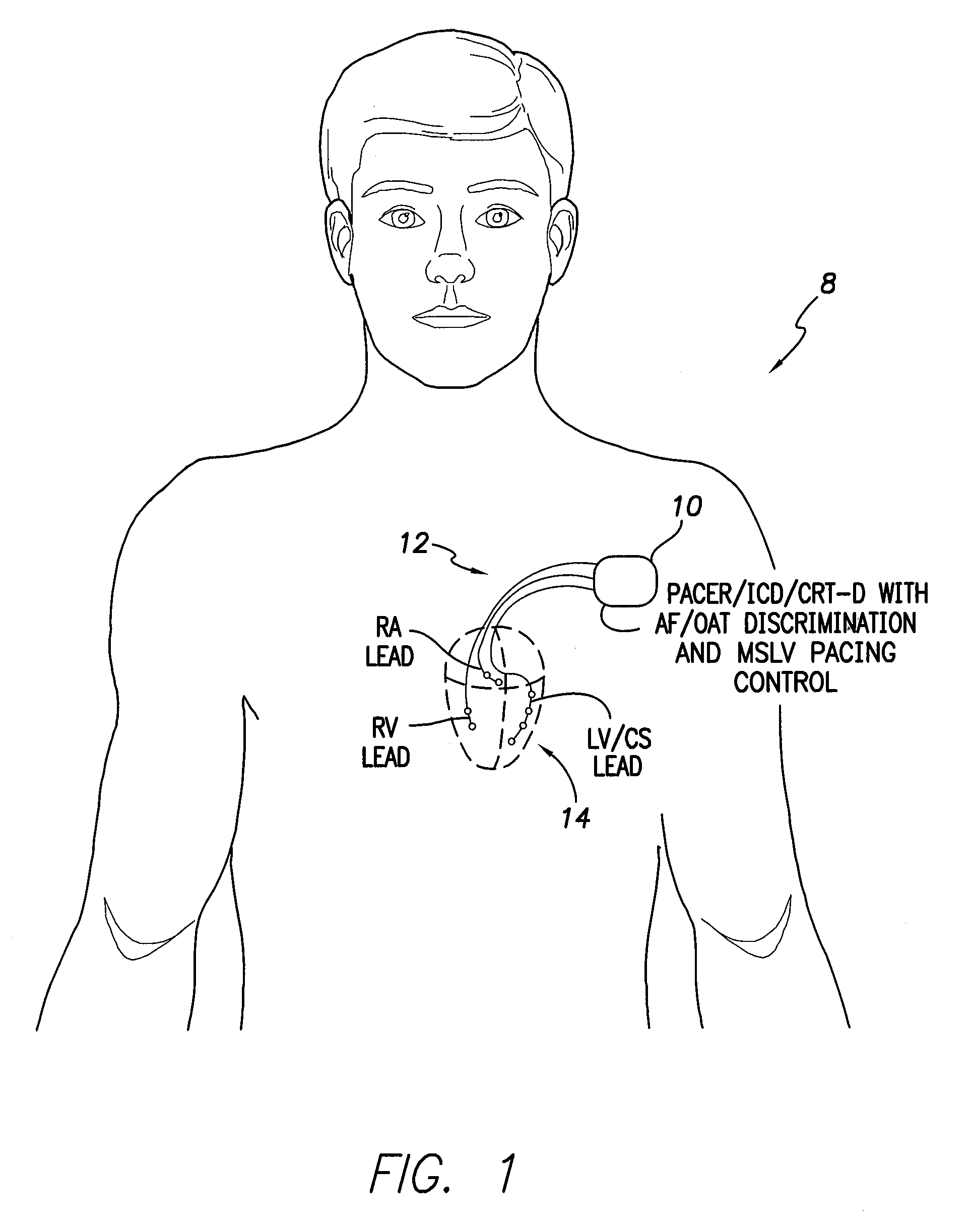Systems and methods for use by an implantable medical device for controlling multi-site CRT pacing in the presence of atrial tachycardia
a multi-site, implantable technology, applied in the direction of heart stimulators, electrotherapy, therapy, etc., can solve the problems of device inability to accurately detect high atrial rates in non-tracking mode, hardware limitations and other practical limitations, and significant inter-electrode time delays,
- Summary
- Abstract
- Description
- Claims
- Application Information
AI Technical Summary
Problems solved by technology
Method used
Image
Examples
Embodiment Construction
[0038]The following description includes the best mode presently contemplated for practicing the invention. This description is not to be taken in a limiting sense but is made merely to describe general principles of the invention. The scope of the invention should be ascertained with reference to the issued claims. In the description of the invention that follows, like numerals or reference designators will be used to refer to like parts or elements throughout.
Overview of Implantable System / Method
[0039]FIG. 1 illustrates an implantable medical system 8 capable of delivering MSLV CRT or other forms of cardiac pacing therapy. The medical system includes a pacer / ICD or CRT-D 10 or other cardiac rhythm management device equipped with a set of cardiac leads 12 implanted on or within the heart of the patient, including a multi-pole LV lead implanted via the coronary sinus (CS). In FIG. 1, a stylized representation of the set of leads is provided. To illustrate the multi-pole configuratio...
PUM
 Login to View More
Login to View More Abstract
Description
Claims
Application Information
 Login to View More
Login to View More - R&D
- Intellectual Property
- Life Sciences
- Materials
- Tech Scout
- Unparalleled Data Quality
- Higher Quality Content
- 60% Fewer Hallucinations
Browse by: Latest US Patents, China's latest patents, Technical Efficacy Thesaurus, Application Domain, Technology Topic, Popular Technical Reports.
© 2025 PatSnap. All rights reserved.Legal|Privacy policy|Modern Slavery Act Transparency Statement|Sitemap|About US| Contact US: help@patsnap.com



